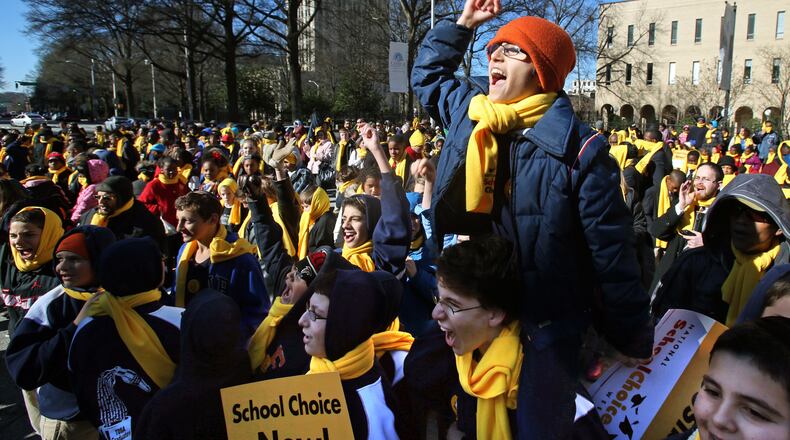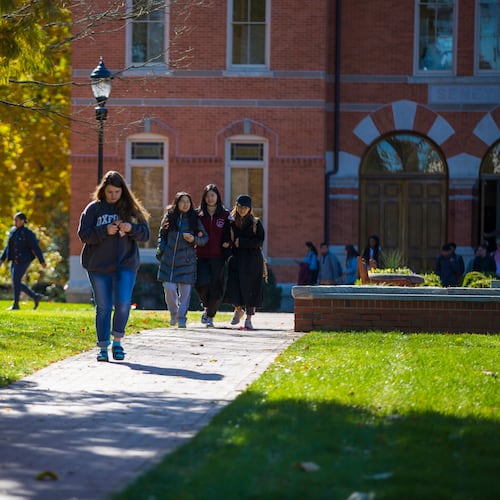Michael O'Sullivan, state outreach director for StudentsFirst, says the Recovery School District proposed by Gov. Nathan Deal earlier this week is a good idea. Read about Deal's plan here.
Credit: Maureen Downey
Credit: Maureen Downey
Deal's suggestion -- made at a campaign event -- is generating a lot of discussion. Folks are asking whether the state has the capacity to turn around failing schools and whether more state bureaucracy will help.
See a piece here calling for a different response to failing schools in Georgia.
By Michael O ' Sullivan
With Governor Nathan Deal ' s announcement that he ' d like to see a statewide school district to turn around failing schools, the next question becomes, well, what might that look like exactly?
In January, StudentsFirst released its State Policy Report Card calling for Georgia, among other things, to set up a Recovery School District or similar structure to help chronically low-performing schools. Based on our research, looking at models in Louisiana and Tennessee is a good place to start.
Essentially, the Recovery School District model sets up a statewide district that oversees school turnaround for the state's lowest-performing schools.
A Recovery School District isn ' t confined to physical boundaries like a normal school district. Instead, schools selected from among the lowest-performing in Georgia, the bottom five percent, would be under the leadership of the new district regardless of whether they ' re located in rural Southeast Georgia or within Atlanta ' s city limits.
In exchange for greater accountability, a superintendent is given the autonomy and power to create true turnaround for schools in the Recovery School District.
Both Louisiana and Tennessee are seeing some incredible results.
Over the past decade or so since Louisiana created their Recovery School District (RSD), they ' ve seen the high school graduation rate increase from 54 percent to 78 percent, which surpasses the Louisiana state average of 71 percent. The percentage of 8th graders performing on grade level increased from 28 percent to 67 percent and the percentage of RSD students who attend failing schools has been reduced from 68 percent to five percent.
While Tennessee only created its Achievement School District (a similar model) in 2012, its students have already made impressive gains in math and science.
These dramatic changes reinforce the fact that any child can learn. They also illustrate the power of an effective leader who can draw high-energy, and innovative teachers to chronically low-performing schools.
For those concerned about a state takeover and a loss of local control, consider this: After years of a school consistently failing to help it ' s students succeed, it ' s safe to say local control hasn ' t been working in that district. Also, schools in a Recovery School District have a strong incentive to set up an advisory board to include parents and other members of the community in the process. They are a critical part of the school ' s success.
And because Recovery School Districts don ' t duplicate schools, there ' s little additional cost to creating a system in our state. The key is bringing in strong leadership that is highly accountable and autonomous.
Ideally, the schools included in the Recovery School District would be selected from the bottom five percent of schools throughout the state. In our state, that would likely be based on the school's College and Career Ready Performance Index (CCRPI) score, because this is Georgia's school grading system. Schools would not be in the district just because they're in the bottom five percent.
The superintendent running the district should have the authority to choose which schools in the bottom five percent are going to be apart of it. That would give him or her the ability to scale the program appropriately. Schools in the district would then be managed according to their performance: great schools expand, struggling schools get support.
Establishing this type of school district in Georgia could be a godsend for so many parents who have lost hope of their children ever succeeding in the public school system. For parents who can ' t afford to move to a better school district, send their kids to private schools, or have found charter schools and other options simply out of reach, a Recovery School District model would provide opportunities that could literally change the course of their children ' s lives.
About the Author
Keep Reading
The Latest
Featured




